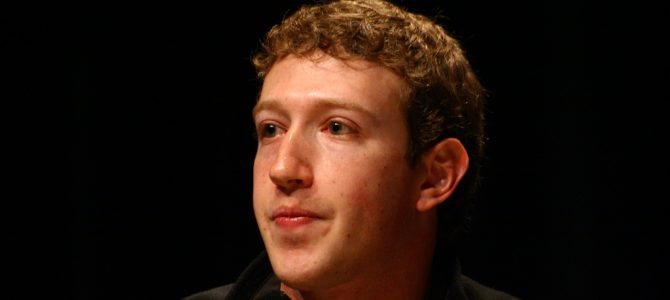
After a month of being hammered over the highly dubious claim that “fake news” on social media tipped the 2016 U.S. presidential election to Donald Trump—as opposed to, say, having a really awful Democratic candidate—Facebook has announced their solution: outsourcing content decisions to legacy media “fact-checking” organizations that are notorious for bias by holding politicians and activists on the Right to much stricter standards than politicians on the Left.
According to Eugene Kiely, director of Factcheck.org, after Facebook alerts them of potentially fake news, the fact-checkers will send back a link to a story that debunks it, if applicable. Facebook will then append the questionable content with a notice that reads “Disputed by 3rd Party Fact-Checkers,” with an option to read more about why that specific post was flagged. If users try to share the post anyway, they’ll be met with an interstitial that again reminds them that third-party fact checkers dismissed it, and a further note that reads, “Before you share this story, you might want to know that independent fact-checkers disputed its accuracy.”
Taken at face value, this “fake news” fix is useless. The same people who flock to read fake news out of a desire to defy the despised Mainstream Media will now go ahead and click on stories flagged as “disputed” out of an urge to defy Facebook and Factcheck.org.
An overview of studies on the fake news phenomenon indicates that Facebook’s critics have it completely backward. People don’t form their political preferences by reading fake news, they seek out fake news to support their political preferences. That goes for both sides, mind you, but given the organizations Facebook has tapped to deal with this issue, I have a feeling that in the new system one side is going be flagged way more often.
Yet for readers of those stories, gaining the official disapproval of Facebook is going to be like being “banned in Boston.” For the right audience, it’s a selling point: “Read the news Mark Zuckerberg doesn’t want you to hear!”
That’s why Facebook doesn’t just leave it to users to make their own choices. Instead, flagged stories will be harder to find in Facebook news feeds and won’t be able to promote themselves with advertising. Given how “fact checkers” have played favorites with their ratings, there is a massive incentive for them to abuse this power simply to suppress facts and interpretations that support the other side of the political debate.
That’s kind of baked into the whole idea. After all, nobody was all that bothered by “fake news” until they thought it produced an election result they didn’t like. Then it suddenly became an issue. So from the very beginning, this push to suppress “fake news” is motivated by a desire to suppress undesirable political outcomes.
The decision to defer to the supposed authority of mainstream media “fact checkers” indicates an even wider agenda. The old mainstream “legacy media” is trying to use the hysteria over fake news as an opportunity to reconstitute its old role as the gatekeeper that controlled what news you saw, heard, and read—and collected a lucrative toll along the way.
It’s important to remember how a lot of these “fact check” sites came into existence. They were a kind of marketing gimmick by the old “legacy media”—the big newspapers and the big three broadcast networks—in an attempt to reassert their fading influence. As more people started getting news and commentary from talk radio, from cable television, and then from blogs and upstart websites, the legacy media began to lose their role of gatekeeper. That’s when they set up “fact check” sites where they put themselves forward as the final arbiter of everybody else’s claims.
But this was just a palliative. It made them feel better, which is to say that it made them feel superior, but it didn’t bring back the audience, or the ad revenues.
Now the legacy media sees its chance to get revenge on digital media, and more to the point, to harness digital media as their new servants. They’re framing up Facebook in the hope that the social media giant will be so eager to show they’re on the correct side that they will invite the legacy media “fact checkers” to be the official gatekeepers of digital media. And it’s working.
This is just the first step. According to a report on this new system, “There are no financial arrangements between Facebook and the fact-checkers, or arrangements that would otherwise benefit the groups.” Well, how long do you think that is going to last? How are they going to take on the job of policing the entirety of Facebook if they’re not getting paid for it? So that will be the next step. The ultimate solution to fake news, the only way for Facebook to expiate its (supposed) guilt for Donald Trump’s election victory, will be to put the legacy media on retainer, to hand over some of its billions and give them favored access to Facebook’s audience.
If only someone would come along and spell it all out for us. And here is Jeff Nesbitt at Time magazine, as antiquated a media dinosaur as you can think of, to reveal the end game. “Fake news,” he thunders, is “an existential threat to Facebook’s reputation.” The only solution: “partner with legacy media to curate real news and reward them for it.” In other words: give us back the power and money we lost. Make us the gatekeepers and toll collectors again. It’s a shakedown, and the motive is nakedly financial: he laments that legacy media’s “business models aren’t sustainable.”
(Meanwhile, it turns out that Nesbitt, who boasts that real journalists “can spot fake news in a nanosecond” was previously peddling an outright conspiracy theory about “how Big Oil and Big Tobacco invented the Tea Party.”)
Mark Zuckerberg has shown that he can occasionally defy demands for political conformity. He shouldn’t let the vampire squid of the legacy media attach itself to Facebook and drag them down into another iteration of their unsustainable business model.









